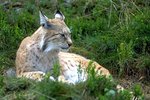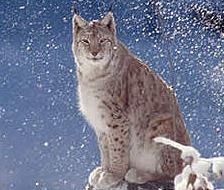The Scottish Wildlife Trust would like to see the once native Eurasian lynx reintroduced to Scotland, for both moral and ecological reasons. The lynx became extinct in Scotland due to persecution and habitat loss.
The Trust believes that bringing back the lynx would help restore the balance in the country’s natural ecosystems, which continue to suffer in the face of pervasive threats, such as inappropriate development and overgrazing.
The Trust’s Chief Executive, Jonny Hughes, said:
“The Scottish Wildlife Trust has experience in bringing keystone species back to Scotland, having been a lead partner in the groundbreaking Scottish Beaver Trial, a trial reintroduction of the Eurasian beaver to Argyll. This was the first ever licensed reintroduction of a mammal species to the UK.”
“The five-year scientific monitoring period of the Scottish Beaver Trial has now come to an end and we await a ministerial decision on the future of beavers in Scotland. We believe that lynx should also be considered for reintroduction and in many ways could be a flagship for the restoration of native habitats, particularly woodlands into the future.”
“Although reintroductions of this nature are complex and must follow strict international guidelines, Scotland is leading the way with its new Scottish Code for Conservation Translocations launched by the Scottish Government earlier this year, through the work of the Scottish National Species Reintroduction Forum of which the Trust is a key member.”
The Eurasian lynx is one of Europe’s largest predators. It has bounced back from the brink of extinction in Europe. (Photo: World Wildlife Fund)
Mr. Hughes explained that one of the major challenges will be finding the right locations to reintroduce the lynx. The Trust would need to work with a range of stakeholders to ensure the predator’s best chance of success and support, as was the case in the Scottish Beaver Trial.
Mr. Hughes added:
“It is important that we all understand the potential benefits of bringing back the lynx to our woodland ecosystems, but also to our forestry and tourism industries. At the same time we should understand the challenges that this beautiful once native cat will bring with it.”
The Eurasian lynx
The Eurasian lynx (Lynx lynx), also known as the northern lynx, common lynx, Siberian/Russian lynx, and European lynx, is a medium-sized cat native to European and Siberian forests, East Asia and Central Asia.
Populations of Eurasian lynx have been extirpated or reduced in western Europe, where it is being currently reintroduced in several areas.
It is the largest of the lynx species, ranging in length from 31 to 51 inches (80-130 cm) and standing about 24 to 30 inches (60-75 cm) at the shoulder.
Males typically weigh from 40 to 66 lbs (18-30 kg) while females weigh from 18 to 46 lbs (8-21 kg).
The Lynx preys mainly on small to fairly large birds and mammals, such as rabbits, hares, squirrels, dormice and other rodents, red foxes, wild boar, moose, roe and red deer, and reindeer. It tends to go for larger prey during the winter months, when the smaller ones are in short supply.


